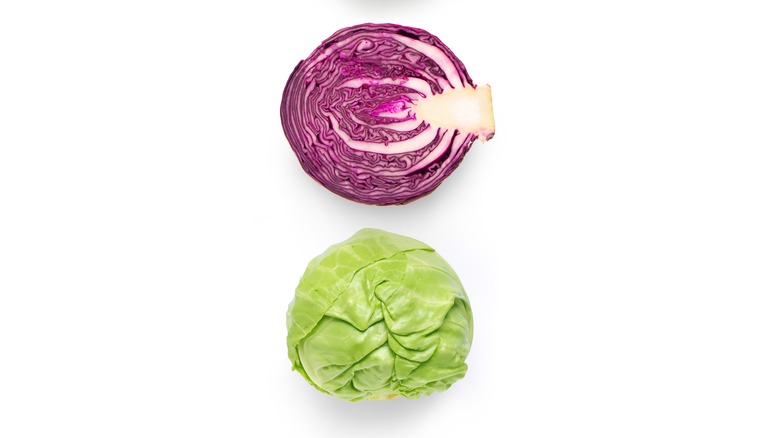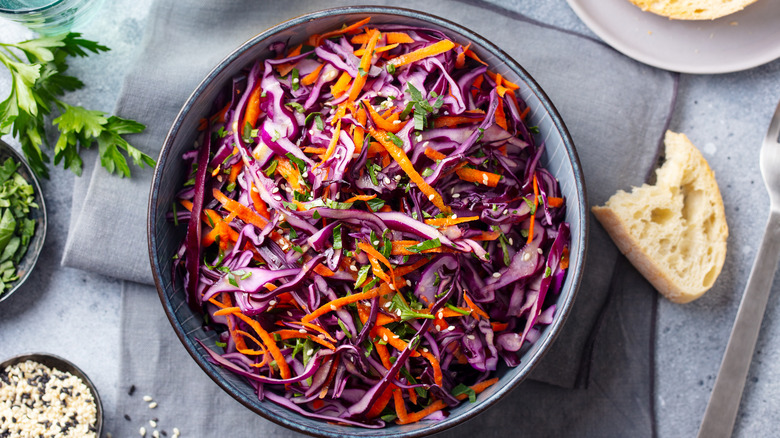Is Red Cabbage More Nutritious Than Green Cabbage?
Vegetables are an important part of a healthy diet; and yet, most Americans are still not eating enough. The CDC has found that only 10% of American adults ate the recommended amount of vegetables, which is 2.5 cups for a person following a 2,000 calorie-per-day diet. According to the study, the group that was best at eating the recommended amount of vegetables were those who were 51 years or older, while low-income people ate the fewest. If a person is trying to follow a 2,000 calorie-per-day diet, they should be eating 1.5 cups of dark green vegetables each week and five cups of starchy vegetables each week, as well as some from other vegetable subgroups, according to the CDC.
When it comes to vegetables you consume regularly for great health benefits, cabbage should be on the shortlist. This leafy vegetable contains potassium and vitamin K, and is a good source of fiber, according to Verywell Fit. On Healthline's list of the 13 healthiest leafy vegetables, cabbage (all color varieties) ranks number five.
But of the two kinds of cabbages most commonly eaten — green or red — is one more nutritious?
Red cabbage edges out green
Red cabbage beats out the green version of the vegetable when it comes to nutritional content. Reducing inflammation and guarding against some cancers are just two of the health benefits believed to be the result of eating red (or purple) cabbage, per Healthline. One cup of chopped, raw red cabbage contains 28 calories, 7 grams of carbs, 2 grams of fiber, 28% of your daily vitamin K, and just over half the daily value of vitamin C. There are also lesser amounts of vitamins B6 and A, as well as a bit of potassium, thiamin, and riboflavin.
In addition, cabbage contains magnesium and calcium, as well as antioxidants, according to Medical News Today, who adds that, when compared, red cabbage generally has more of these compounds. It's easy to incorporate cabbage into your meal plan because of its versatility. It can be grilled, fried, pickled, roasted, made into soup, added to a salad, and much more.

